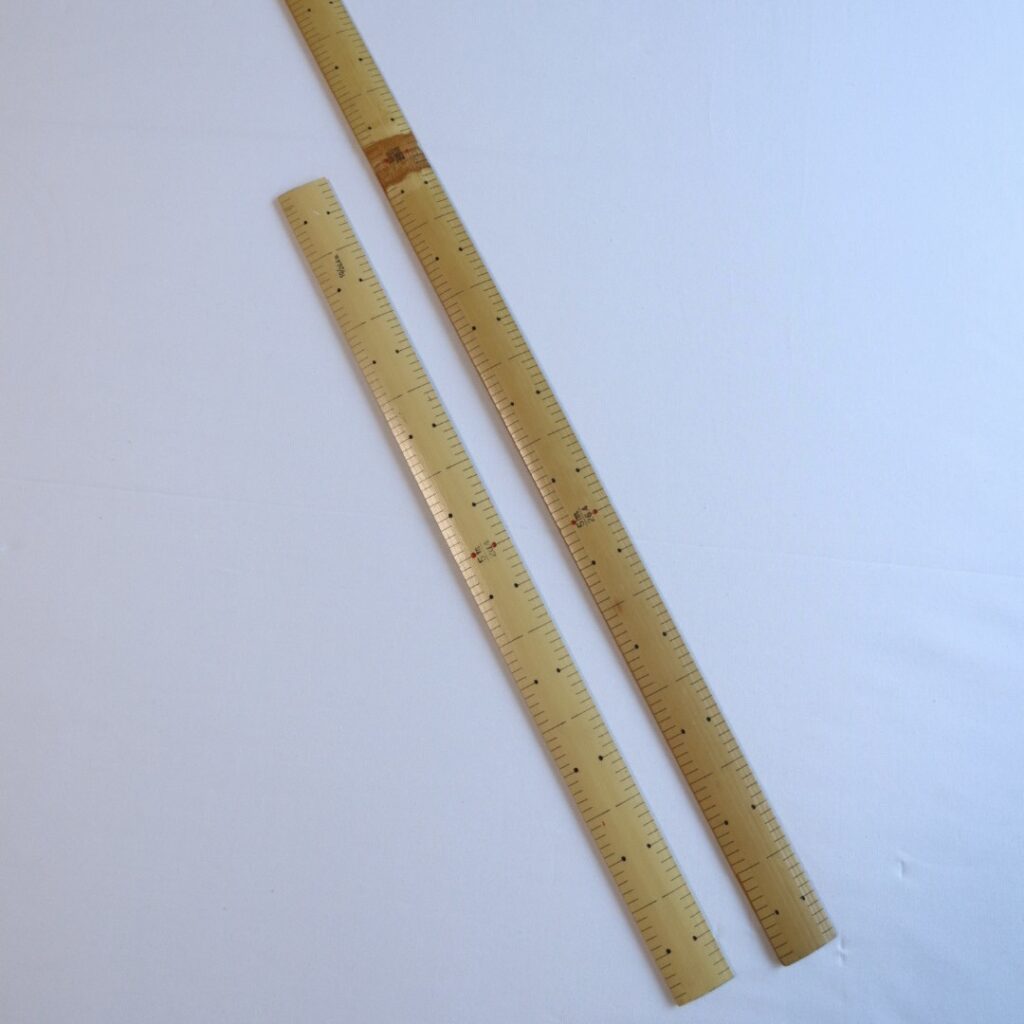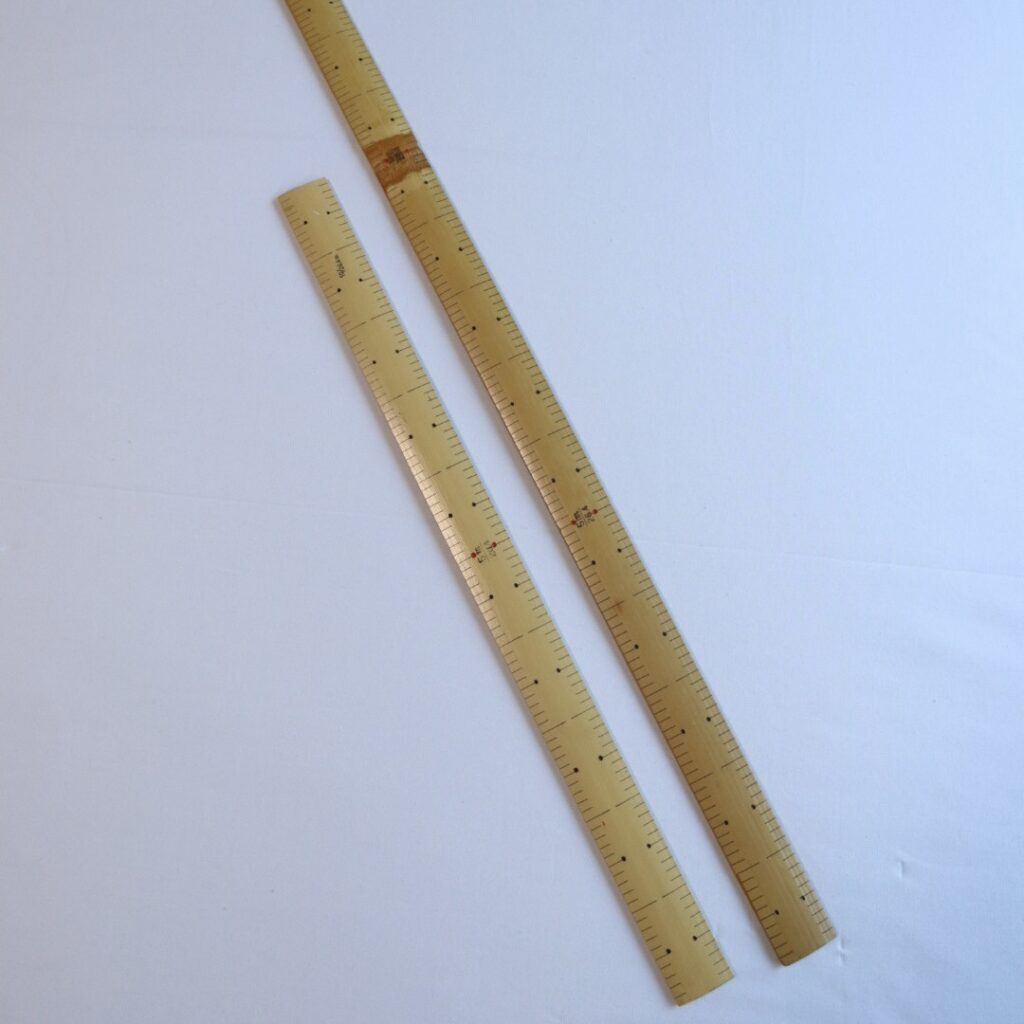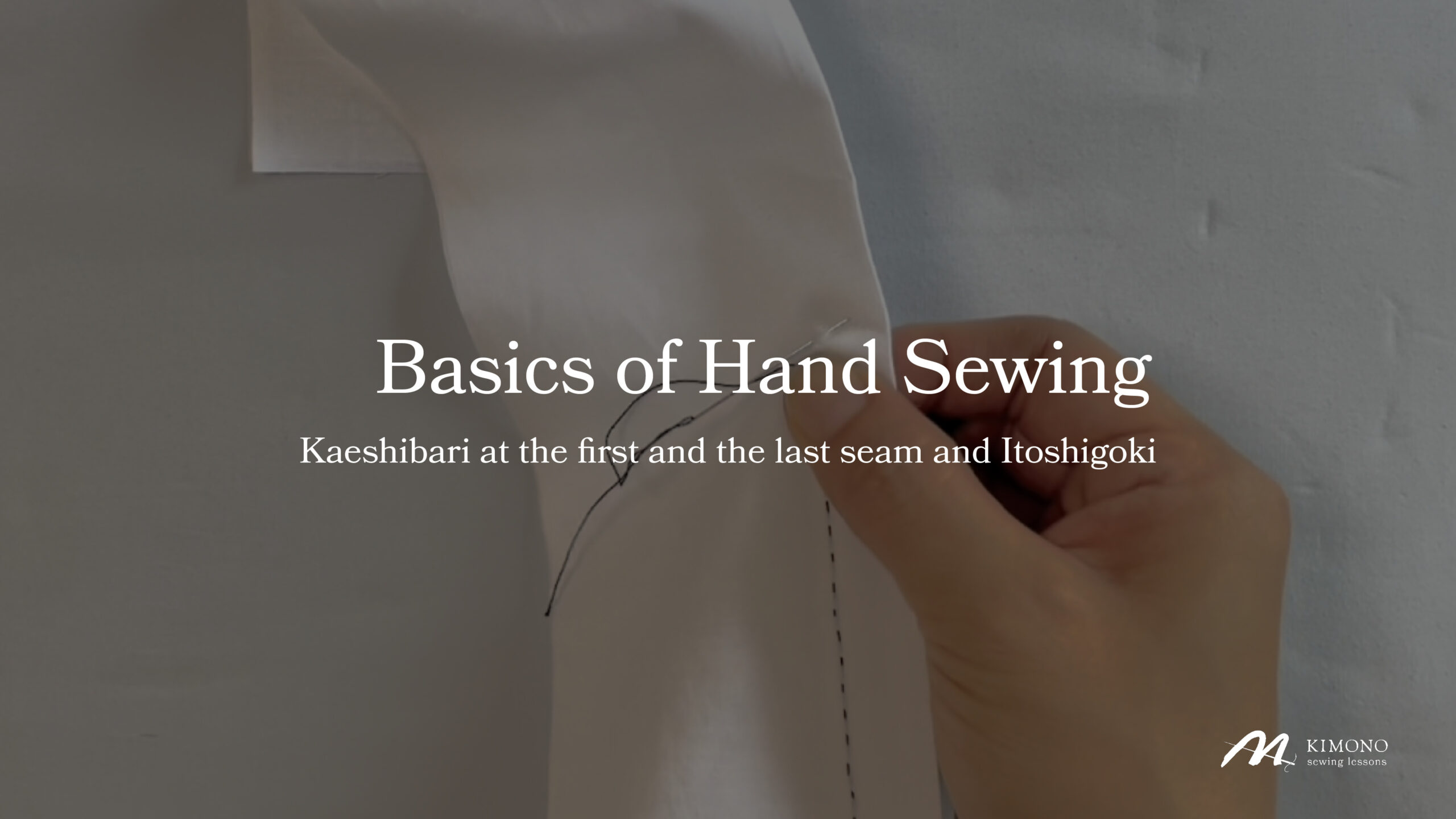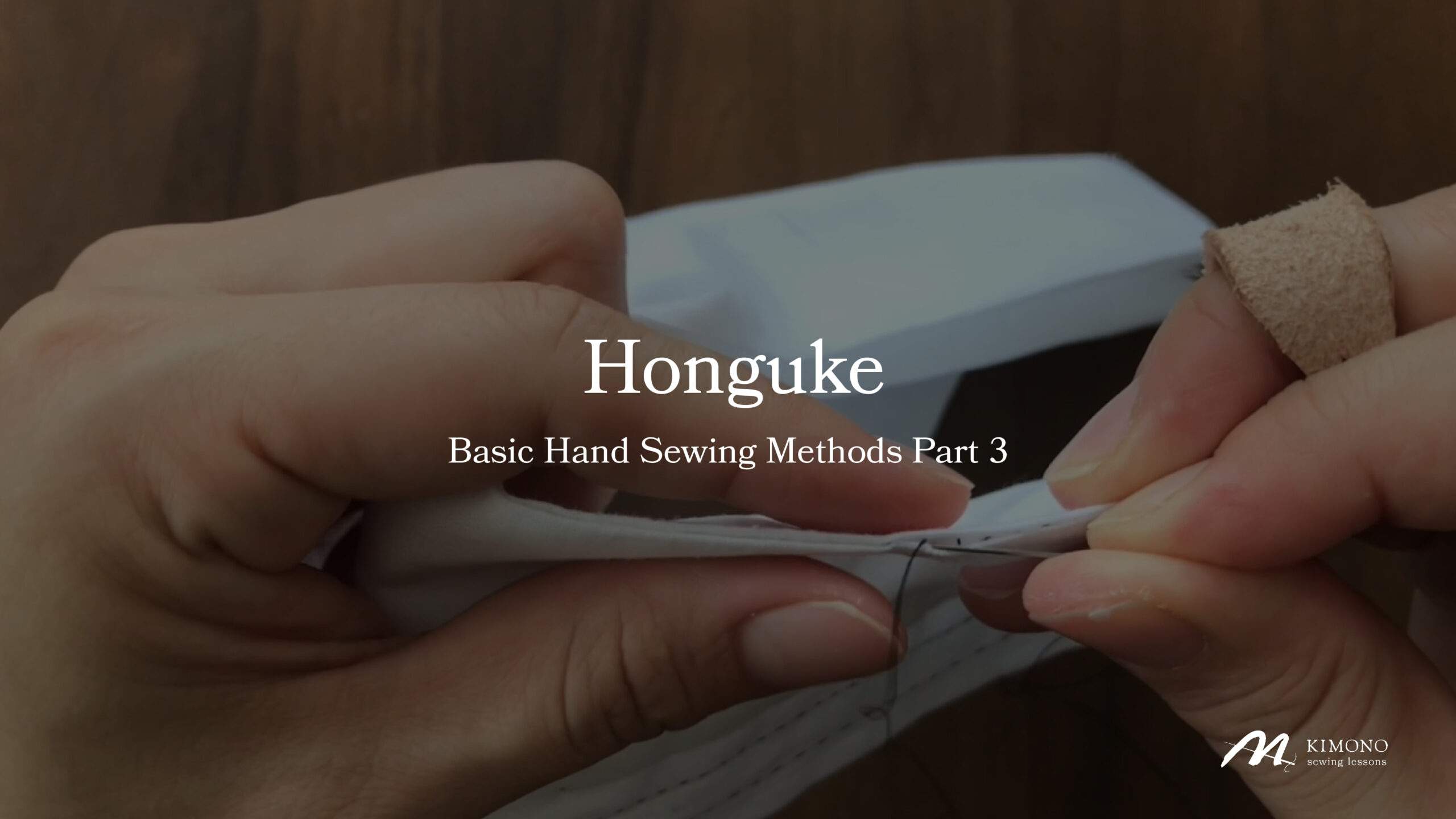Kimono Sewing tools are a necessity for all kimono sewers. Here are some of the tools that are especially necessary for kimono sewing. If you want to start sewing kimonos, but don’t know what kind of tools you need and how they differ from common sewing tools, this article may help you.
Tools needed for sewing kimonos are posted in the series “Kimono Sewing Tools“.
Please read about the other tools as well.

Kimono Sewing Tools
Many new kimono sewers ask themselves what are the best sewing tools and equipment to have in a beginners sewing kit.
Kimono sewing Tools can be divided into:
- Needles and Pins
- Sewing Thread
- Cutting Tools
- Measuring Tools
- Marking Tools
- Pressing Tools
- Miscellaneous Sewing Tools
If it is difficult to get tools specialized for kimono sewing, Western sewing tools are often sufficient.
What is KUJIRA-SYAKU
“Kujira-shaku” is a unit of length used only for making kimono. It is a common unit for those who make kimono fabrics, dye kimono fabrics, sell kimonos, sew kimonos, and are involved in this kimono industry.
The photo shows a kujira-Shaku ruler, Monosashi in Japanese. When sewing a kimono, two pieces are used, a short one and a long one.

How to convert Kujira-syaku into Centimeters.
Calculation Formula
- Kujira-syaku × 2.64 = Centimeters
- Centimeters × 0.3788 = Kujira-syaku
Example
165cm × 2.64 = 435.6
How to read : 4-syaku 3-sun 5-bu, 4尺3寸5分
How to read the scale
In kimono, we mainly use the following units of length: jou, shaku, sun, bu, and rin.
- 丈 : jou
- 尺 : syaku
- 寸 : sun
- 分 : bu
- 厘 : rin

The smallest unit on the scale is “bu”.
There are black dots at 5 bu.
There are lines at 10 bu = 1sun.
5 rin = 0.5 bu
10 bu = 1 sun.
10 sun = 1 shaku
10 shaku = 1 jou
You can download the actual-size scale of Kujira-syaku.
Related Articles
-
 Basic sewing technics
Basic sewing technics
Basic of hand sewing : Kaeshibari and Itoshigoki
Next to the Unshin, the basics of hand sewing that you should learn are the “Kaeshibari at the first and the l […] -
 Basic sewing technics
Basic sewing technics
How to make “chikara-Nuno” for attaching to Kataaki Part 2
In addition to small “mikazuki”, you may also see kimonos with long, thin stay cloth.In this time, I will show […] -
 Basic sewing technics
Basic sewing technics
HONGUKE – Basic Sewing Techniques
The third basic sewing technique is “Honguke”.When sewing a yukata or a hitoe kimono, “honguke” is done at the […]